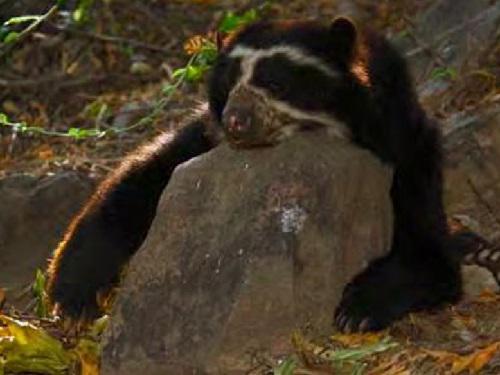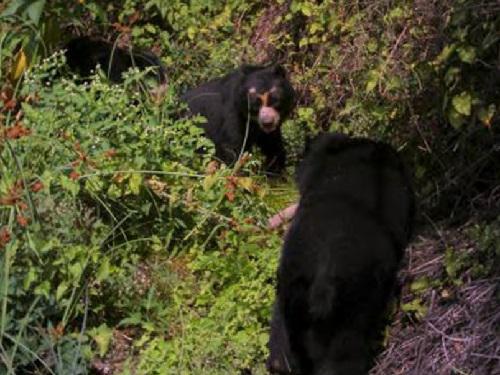Renata Leite Pitman
This project combines research, education and capacity-building to identify important wildlife crossing points on the Interoceanic Highway, to evaluate and increase the knowledge of key mammal species that will be imperilled by the highway (Andean Bears, Jaguars and Giant Otters), and to find alternatives to maintain the populations connected from one to the other side of the highway.

Andean Bear, an IUCN’s vulnerable species that will be highly affected by the highway. ©Rob Williams.
The Interoceanic Highway, connecting Brazil to the Pacific, is under construction and due for completion in 2009. Catastrophic impacts have been predicted for forests of the Amazon-Andes region, putting at risk non-contacted indigenous groups and wildlife. In Peru, the highway will bisect a globally important complex of protected areas, where key and threatened mammal species such as Andean Bears (Tremarctos ornatus), Jaguars (Panthera onca) and Giant Otters (Pteronura brasiliensis) are found. If predictions are realized, the habitat of these and other species will be fragmented, contributing to their decline. Focusing on these species, we propose to reduce the predicted impacts by raising awareness of conservation corridors and wildlife passages across the highway.

Populations of Andean Bears, Jaguars and Giant Otters, umbrella and flagship species for the terrestrial and aquatic ecosystems of the Andes-Amazon region, are known to cross the existing unpaved road. Since the highway is currently under construction, we plan to offer the local government scientific and economic reasons to maintain habitat connectivity via, e.g., the construction of underground corridors for animals that cross the highway and the use of fences to avoid animal fatalities. Our field team, composed of biologists from local universities, will train schoolteachers, park guards and tourist guides about the impact of the highway on regional wildlife. We aim to demonstrate how the presence of these species can attract tourists and can help improve the economy in the region through organized development and ecotourism. Preserving animal habitat and training local people to find their signs and show them to visitors will attract tourism to the region.
We plan to survey for signs of our focal species at least twice monthly on both sides of the highway through camera trapping, hair trapping and scat collection in order to monitor populations and to detect natural corridors. We will be also surveying all road kill found along the highway (mammals, reptiles, amphibians and birds) to identify important crossing points for other species. Based on these results, we will work with Odebrecht (the company which is paving the highway), Peru’s Ministry of Transportation and private industry to implement wildlife signs, fences, speed bumps, and wildlife passages at important crossing points.